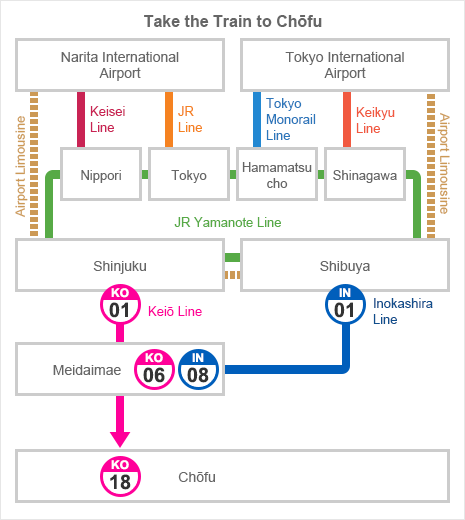
Chofu Area -Jindaiji, etc.-
Chofu is home to many locations deeply connected to manga artist Shigeru Mizuki’s best-known work, GeGeGe no Kitaro.
Japanese sensibility and natural beauty is lush through the areas surrounding Jindaiji Temple, an area brimming with spots to visit such as souvenir shops and teahouses.
Course around Chofu Station
Fudatenjin Shrine
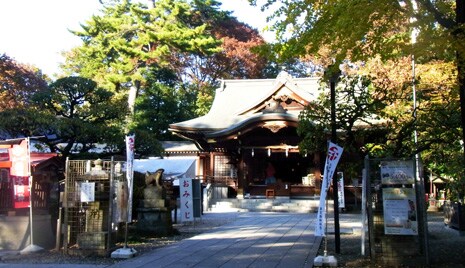
Fudatenjin, of the oldest shrines in the Tama region, is listed in Engishiki, a legal code established in the middle of the Heian Period. Remaining records date its founding back to about 1,940 years ago. The structures were moved to their current site in the middle of Muromachi Period, when Sugawara no Michizane was enshrined together with the main enshrined deity, Sukunahikona no Mikoto. During the Edo Period, the shrine was a local Shinto deity for five posting stations (goshuku) on the Koshu road (Kamiishiwara, Shimoishiwara, Kamifuda, Shimofuda, and Kokuryo) and greatly revered as a goshuku tenjin. Many visitors nowadays come to receive blessings for academic achievement and prosperous business. Since being featured as a “spiritual power spot” in a television program recently aired, the nose of Goshingyu (the statue of the holy cow) has been buffed to a brilliant shine by the many thousands of visitors who have stopped to stroke it. The oldest stone-carved shrine dogs in Chofu city are also located on the premises.
Access
5-minute walk from the north exit of Chofu Station
Telephone
042-489-0022
Tenjin Shopping Street
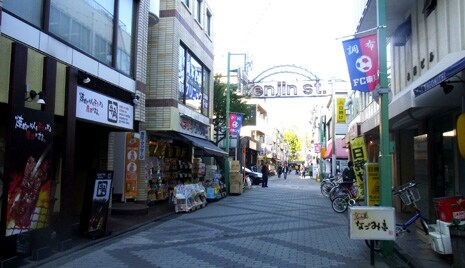
Monuments of Kitaro and other ghoulish characters from the world of GeGeGe no Kitaro appear everywhere along the shopping street leading up to the front approach to Fudatenjin Shrine. Walking down from Chofu Station, you will also see Kitaro on the street lights at both entrances to the street. Try, if you can, to find all of the ghosts.
Access
2-minute walk from the north exit of Chofu Station
Nogawa River
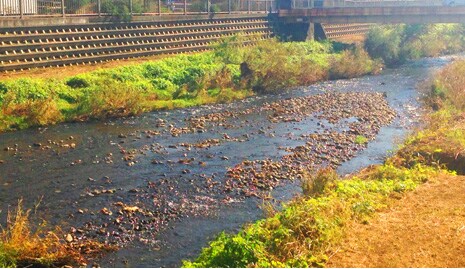
Nogawa River is a clear freshwater stream fed by Kokubunji terrace cliff, a habitat with many wild birds, carps, and other fish. Walkways and cycling roads are provided on both banks of the river, except near the bank-protection works around Jindaiji Temple. A good place to enjoy a riverside stroll in a cool river breeze.
Access
10-minute walk from Jindaiji Temple bus stop
Chofu City Mini Community Bus
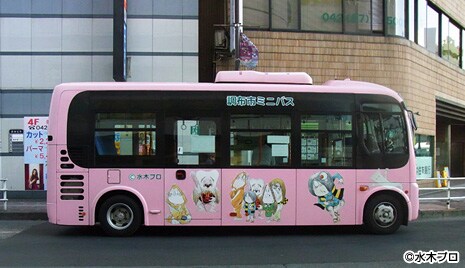
The Chofu City community is served by a small fleet of "Kitaro busses," mini-busses painted with characters from the world of GeGeGe no Kitaro. Three routes operate: the western route from the south exit of Chofu Station (Keio-tamagawa Station - Tamagawa 2 chome - Kamiishiwara 3 chome) to the north exit of Tobitakyu Station, the northern route from the north exit of Chofu Station (Musashino ichiba - Shibasaki Orikaeshijo), and the eastern route (Sengawa Station - Shirayuri Joshi Daigaku - Sengawa Station).
Please see the Chofu City website for a timetable and other details (Japanese only).
Course around Jindaiji Temple
Jindaiji Temple

Jindaiji Temple was founded by Saint Manku as a temple of the Hosso sect during the Nara Period (in 733) and later converted into a temple of the Tendai sect. Few temples in the Kanto area predate it. The most prized artifacts within the temple are the sacred Amida triad enshrined in the main building and the bronze izo (figure sitting on a stool) of Shaka Nyorai discovered under the altar of Ganzandaishi-do (also from the Nara Period). Shaka Nyorai, the Buddha figure portrayed by the treasured izo statue, resembles a Hakuho Buddhist figure in many respects, with flowing drapery and the features of a young man. Also famous are the temple bell from the early Muromachi Period and the temple gate from the early Edo Period.
Temple Gate
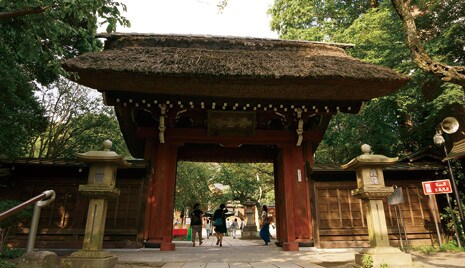
A showy, straw-thatched gate from the Edo Period with the name of a mountain (Fugakusan) inscribed on the front plaque. The gate escaped a massive fire at the end of the Edo Period, which now makes it the oldest structure on the temple grounds. According to the ridgepole plaque on the inner roof of the gate, it was built by 1,000 donors and laborers in 1695.
Access
Near Jindaiji Temple bus stop
Telephone
042-486-5511
Kitaro Chaya
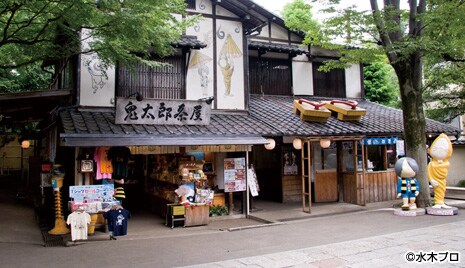
A theme shop and café based on the "GeGeGe no Kitaro" manga series, located along the approach to Jindaiji Temple. The shop sells a large inventory of Kitaro goods and books. Visitors to the café on the 1st floor café can select from a menu of edible “GeGeGe no Kitaro” ghosts, including sweet chestnut Zenzai, Medama Oyaji, and Miso Oden formed into the shape of Nurikabe. The gallery on the 2nd floor presents biographical information on Shigeru Mizuki, the creator of Kitaro, along with realistic figures of his ghoulishly adorable creations. Kitaro Chaya is a popular destination for fans of GeGeGe no Kitaro and its ghostly denizens. It is loved by children and adults alike.
Access
Near Jindaiji Temple bus stop
(next to the entrance of the temple approach)
Telephone
042-482-4059
Jindai Botanical Park
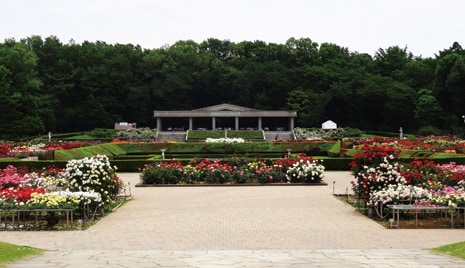
Opened in 1961 as Tokyo's only botanical park. Come here to see as many as 100,000 plants of 4,800 species arranged in 30 blocks. Three of the blocks, the bush clover garden, rose garden, and plum garden, are inhabited by flowers and greenery from the four seasons. The park is most colorful in May, when spring makes way for early summer. Flowers such as azalea, rhododendron, and peony come into full bloom over these weeks, along with the 5,200 rose bushes in the "rose garden," the venue of the famous Rose Festa.
Access
Near Jindaiji Botanical Park bus stop
(a short walk from the stop)
Telephone
042-483-2300
Directions
